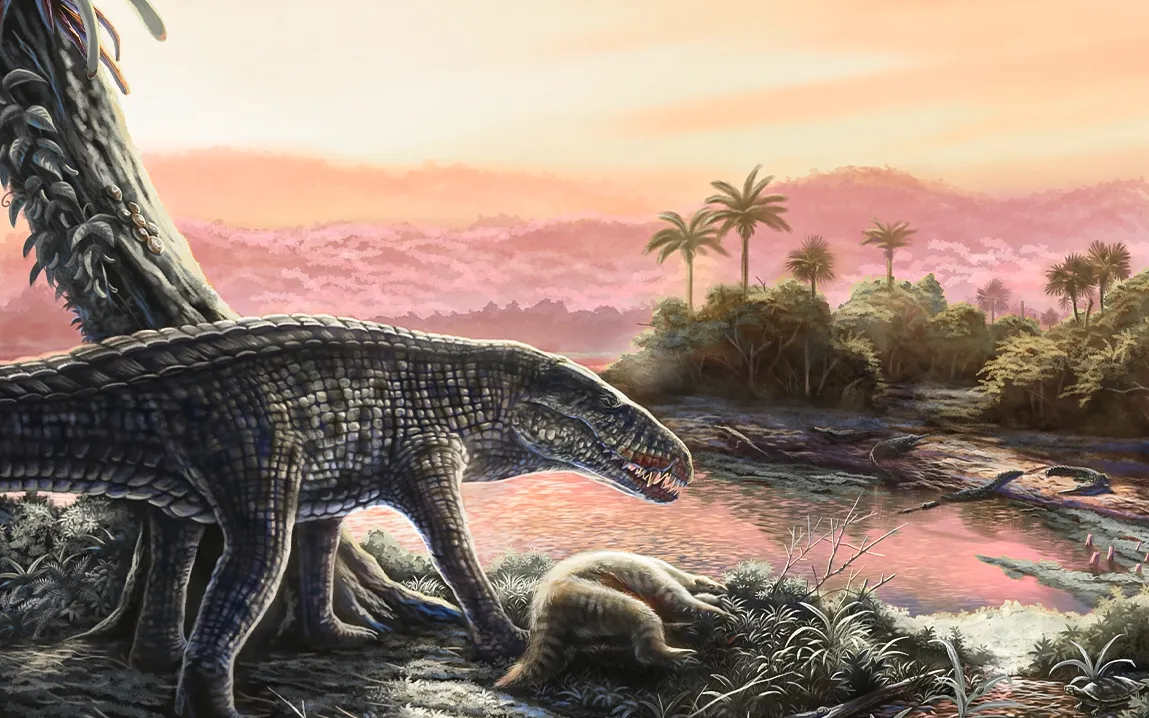For years, scientists believed that massive, meat-eating reptiles called sebecids disappeared from the planet around 11 million years ago. But fresh fossil finds from the Dominican Republic challenge that timeline and put the Caribbean back on the prehistoric map.
Sebecids are not average crocodiles. They were built more like greyhounds than swamp lurkers. These creatures stood tall, ran on land, and some stretched up to 20 feet long. They looked like something out of Jurassic Park, only they came millions of years after the dinosaurs were gone. Until now, no one thought these land predators ever made it to the Caribbean.
A Mystery That Took Decades to Solve
The first clues showed up decades ago when a couple of sharp, serrated teeth were found in Cuba. Then came another in Puerto Rico. But with no bones to match, paleontologists couldn’t be sure what kind of animal left them behind.
But that changed in early 2023. A team of researchers digging in the Dominican Republic found another tooth and this time, it came with two fossilized vertebrae. That was enough to make a match.
“It’s hard to describe the feeling when you realize what you’ve found,” said Lazaro Viñola Lopez, lead author of the study and a researcher at the University of Florida. “We knew we had something big.“
A Predator That Shouldn’t Be There
These fossils confirmed what scientists had long suspected: the teeth belonged to a sebecid, one of the last land-walking crocodile relatives. And they were still around in the Caribbean millions of years after vanishing from the mainland, which is a big deal.
“The presence of a large predator is really different than we imagined,” said Jonathan Bloch, curator at the Florida Museum of Natural History. “You wouldn’t have predicted this looking at today’s Caribbean ecosystems.”
The find supports a theory known as GAARlandia, which suggests that a chain of temporary land bridges once linked South America to the Caribbean islands. It could explain how these heavy, land-dwelling reptiles managed to get there in the first place.
The Fossil Rush Is Just Beginning
In recent years, scientists have started looking beyond caves and sinkholes, where most Caribbean fossils come from, to search for older, deeper remains. And it’s starting to pay off.
The sebecid fossils were discovered after road crews cut through a fossil-rich area. A sharp-eyed grad student spotted the exposed layers and alerted his team.
Viñola-Lopez called it a “renaissance” for Caribbean paleontology. His team has already uncovered other ancient surprises, including the region’s first mosasaur, a massive sea reptile, and the oldest ground sloth fossils on Hispaniola.
Each find helps fill in the blanks of what this region used to look like: a place full of strange creatures, fierce predators, and ecosystems we’re only beginning to understand.
And as Viñola-Lopez puts it, the discovery of the sebecid is “just the tip of the iceberg.”



